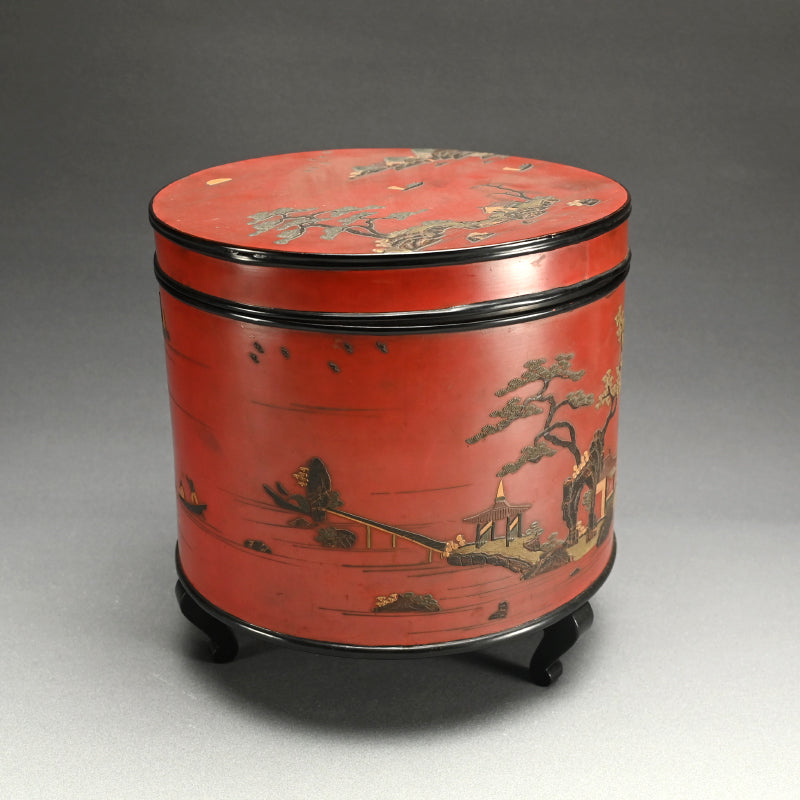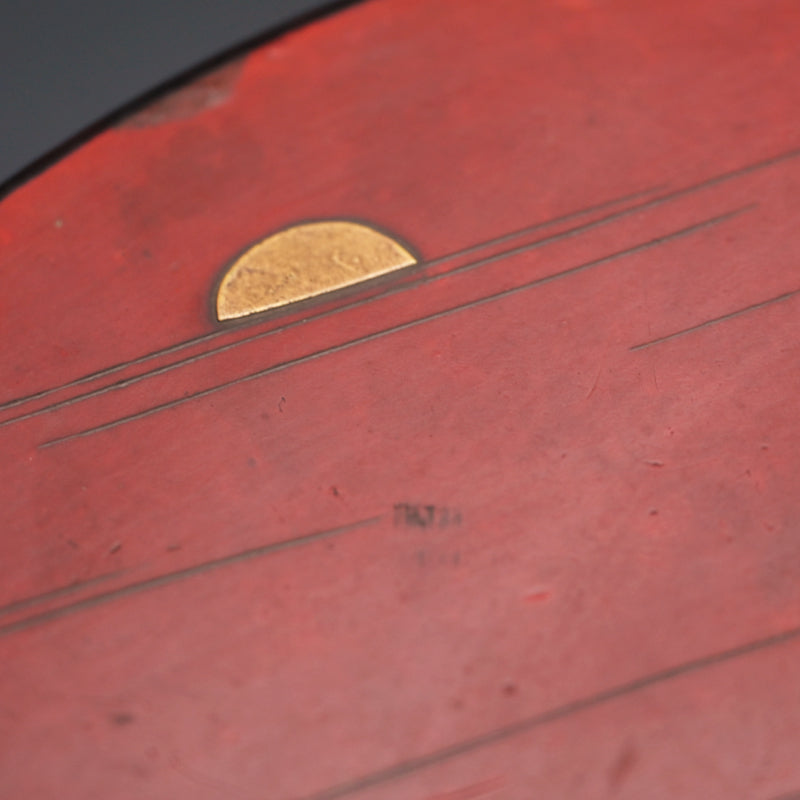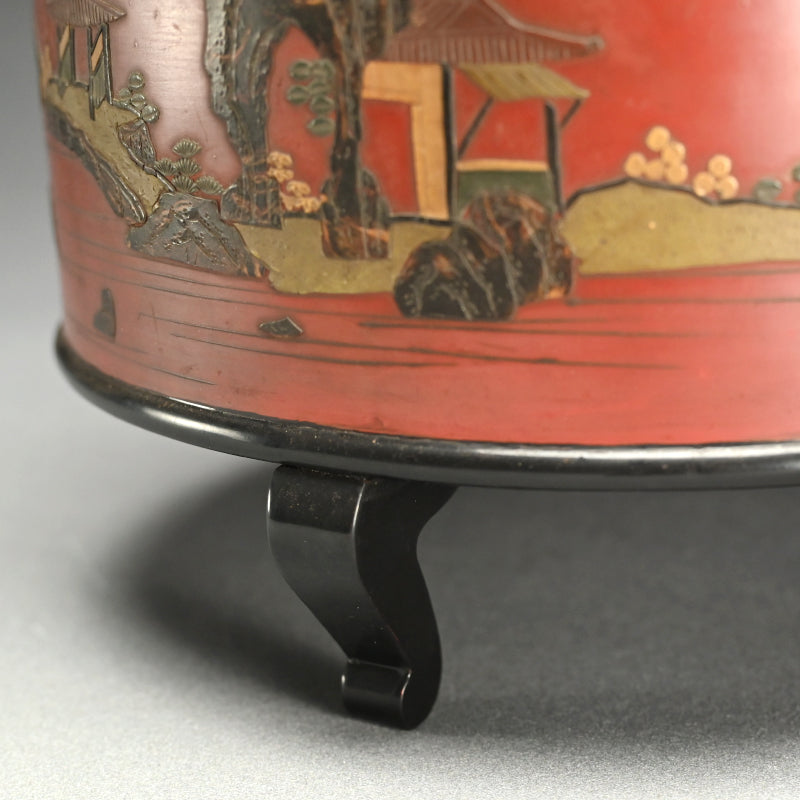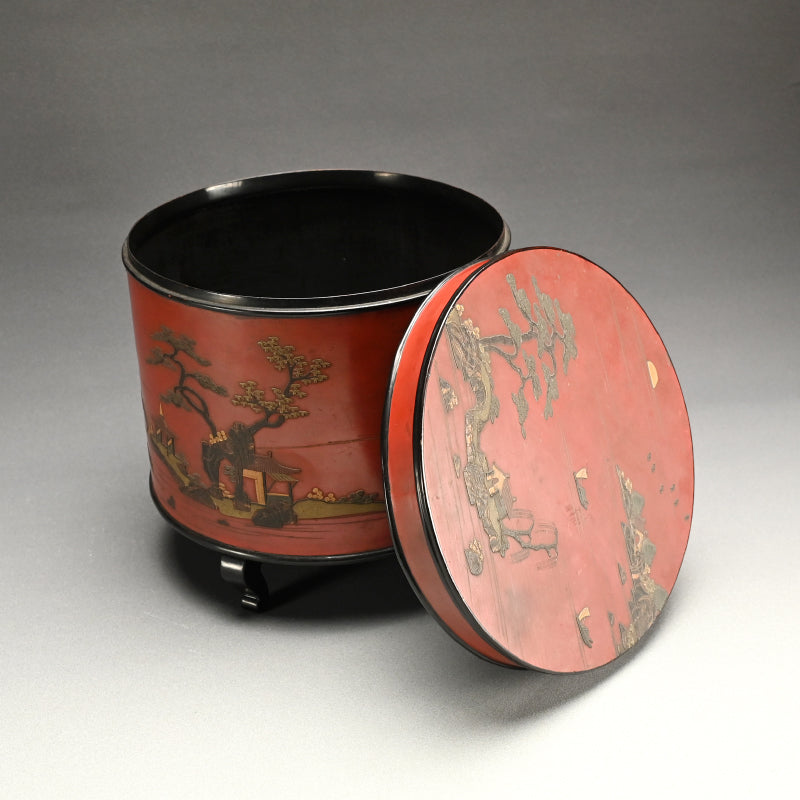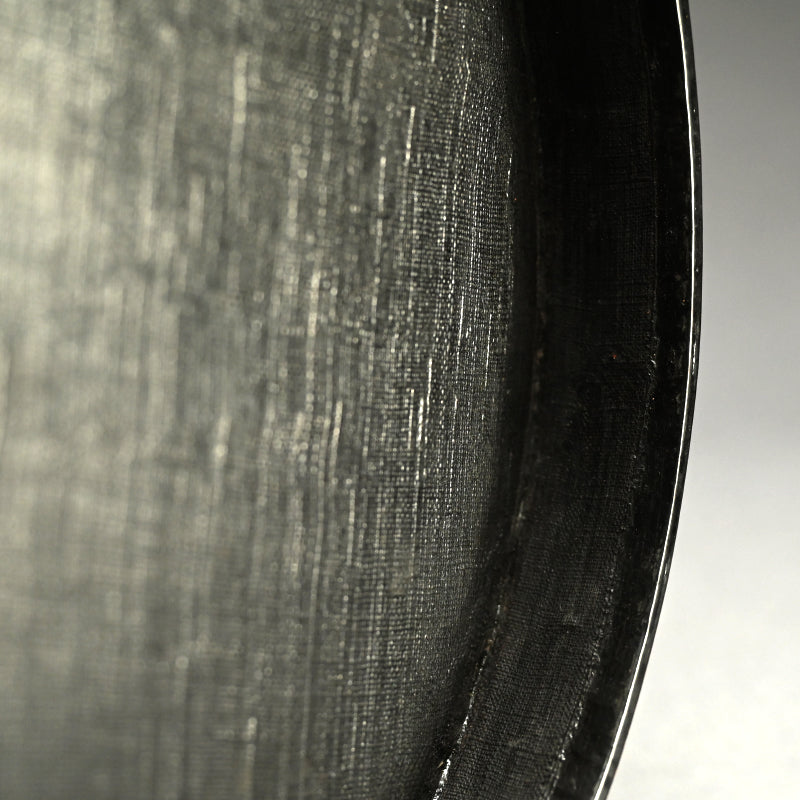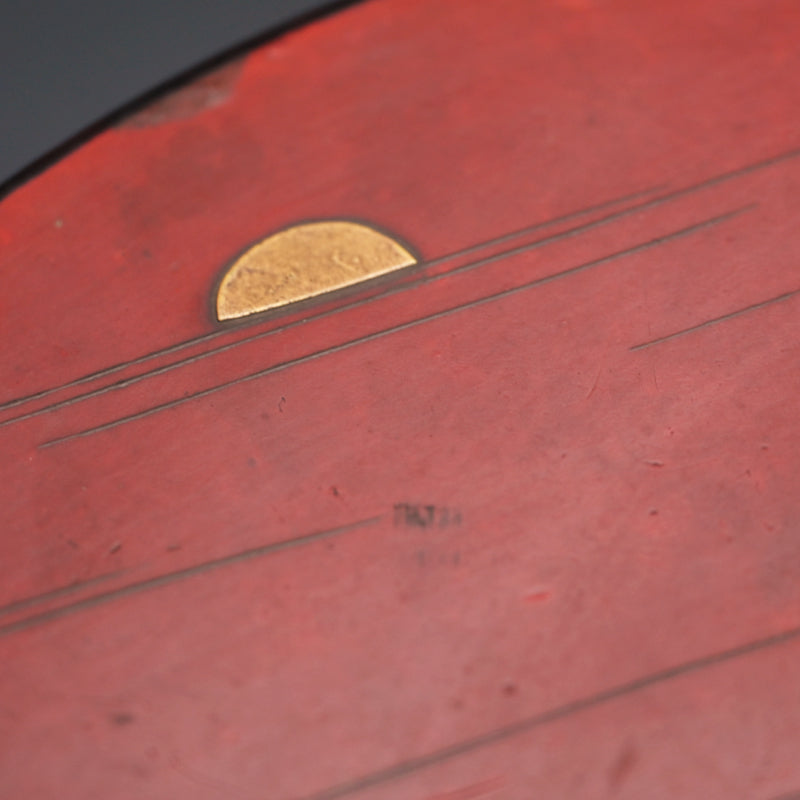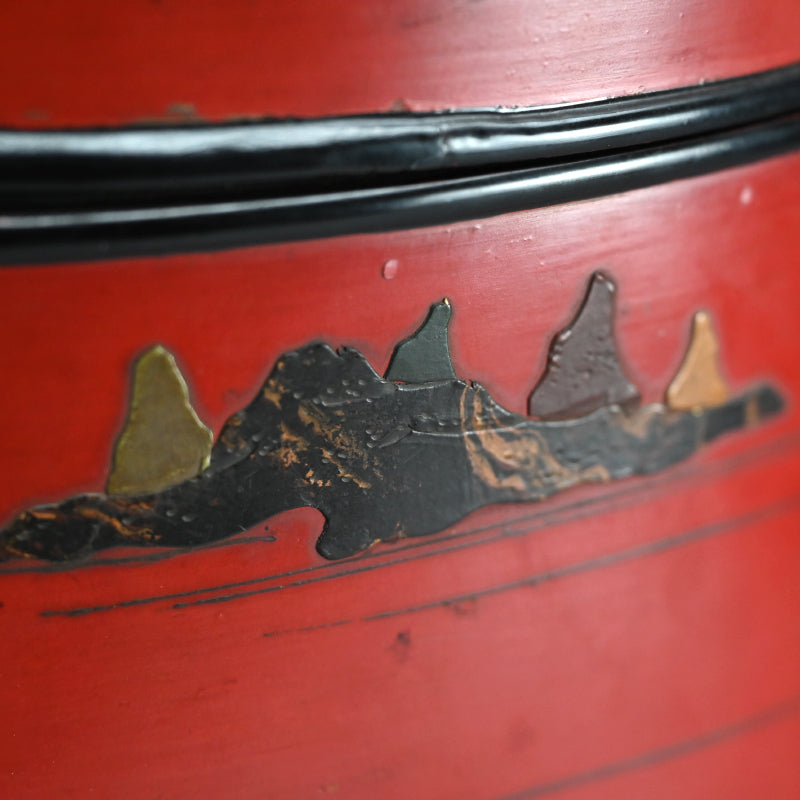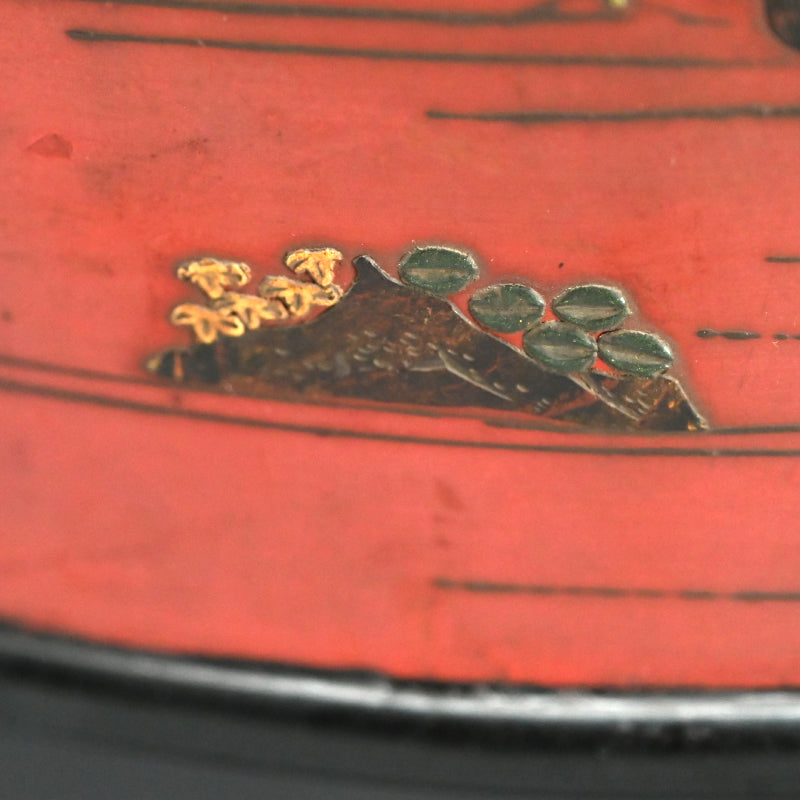1
/
of
25
Rare Ryukyu Circular Lacquered Wooden Container, Okinawa
Rare Ryukyu Circular Lacquered Wooden Container, Okinawa
Item Code: K508
Regular price
¥469,000 JPY
Regular price
Sale price
¥469,000 JPY
Unit price
/
per
Tax included.
Couldn't load pickup availability
A large container on three scrolling feet covered in cinnabar lacquer decorated with islands dotted with pavilions off the shores of which ply sail boats on placid waters. It is 30 cm (12 inches) diameter, 31 cm (12-1/2 inches) tall and in overall fine condition. The distinctive red color often seen in Ryukyuan lacquer is of a more vibrant tone than that from China or Japan. It is obtained by mixing raw lacquer with red pigment in roughly equal amounts, a mixture which turns blood-red in the sunlight. This piece makes use of a technique known as tsuikin (lit. piled brocade) which is especially distinctive for Ryukyuan lacquers. Lacquer is mixed with pigments to create a sort of clay or putty, which is shaped and carved and then applied onto the object, in order to create textured three-dimensional effects.
As the lacquer tree is not native to Okinawa, the key material needed to produce lacquerware could only be obtained by the Ryukyuans through trade. Though the islands were involved with trade with Japan and the Asian mainland for many centuries, it is generally believed that the presence and production of lacquerware in Ryukyu only began to any significant extent in the late 14th or early 15th centuries. Ryukyu enjoyed a booming trade with Southeast Asia and Korea, and traded many goods from these countries with China, either as tributary gifts or as regular trade goods. Beginning in 1609, when Ryukyu was invaded by Japan's Satsuma Domain, its trade with Southeast Asia and Korea all but came to an end, replaced by commerce with Satsuma. Thus, given the changes in Ryukyu's relationships with foreign countries over its history, it is easy to see why Ryukyuan lacquer prior to the 17th century shows strong Chinese, Korean and Southeast Asian influences, while objects produced after the Japanese invasion evidence far stronger Japanese influences. A vast majority of Okinawan lacquer (and other cultural objects) were destroyed during the battle of Okinawa in the second world war, when the Islands were laid waste by both the victors and vanquished with scorched-earth/ take-no-prisoners policies, and finding impressive pieces like this today is decidedly uncommon.
As the lacquer tree is not native to Okinawa, the key material needed to produce lacquerware could only be obtained by the Ryukyuans through trade. Though the islands were involved with trade with Japan and the Asian mainland for many centuries, it is generally believed that the presence and production of lacquerware in Ryukyu only began to any significant extent in the late 14th or early 15th centuries. Ryukyu enjoyed a booming trade with Southeast Asia and Korea, and traded many goods from these countries with China, either as tributary gifts or as regular trade goods. Beginning in 1609, when Ryukyu was invaded by Japan's Satsuma Domain, its trade with Southeast Asia and Korea all but came to an end, replaced by commerce with Satsuma. Thus, given the changes in Ryukyu's relationships with foreign countries over its history, it is easy to see why Ryukyuan lacquer prior to the 17th century shows strong Chinese, Korean and Southeast Asian influences, while objects produced after the Japanese invasion evidence far stronger Japanese influences. A vast majority of Okinawan lacquer (and other cultural objects) were destroyed during the battle of Okinawa in the second world war, when the Islands were laid waste by both the victors and vanquished with scorched-earth/ take-no-prisoners policies, and finding impressive pieces like this today is decidedly uncommon.
Share





